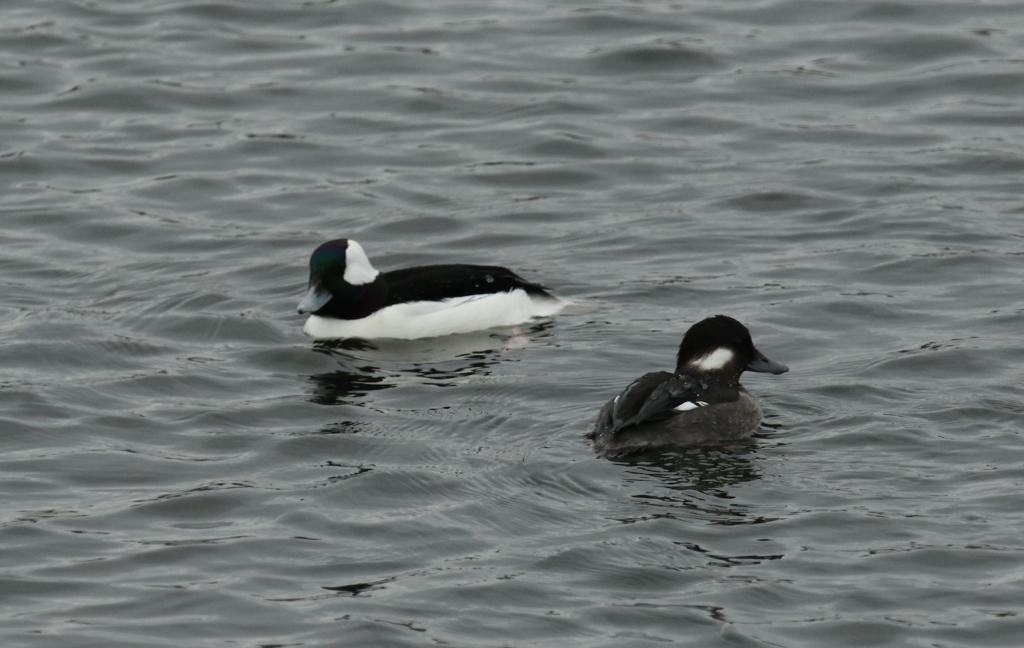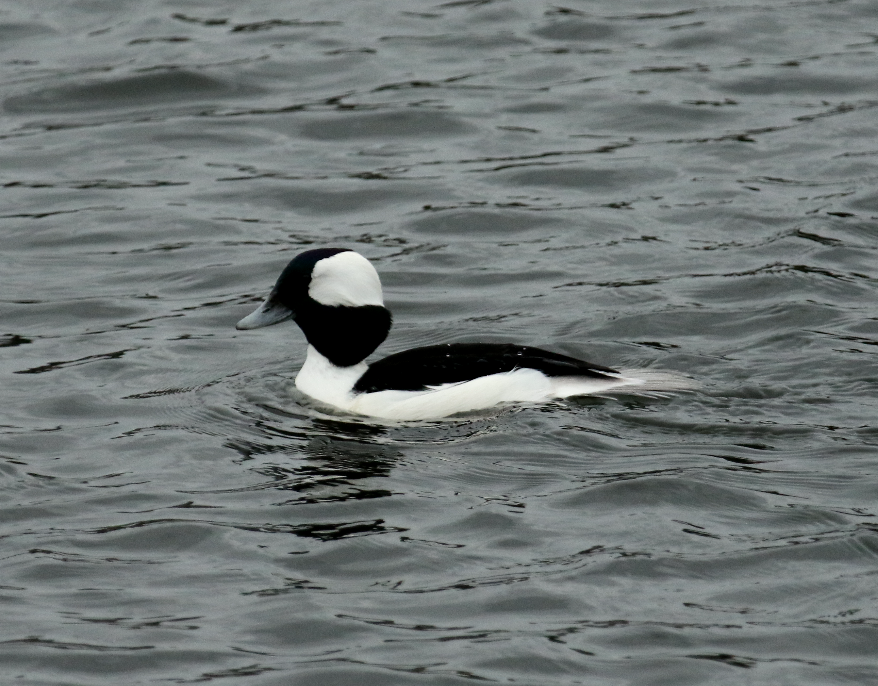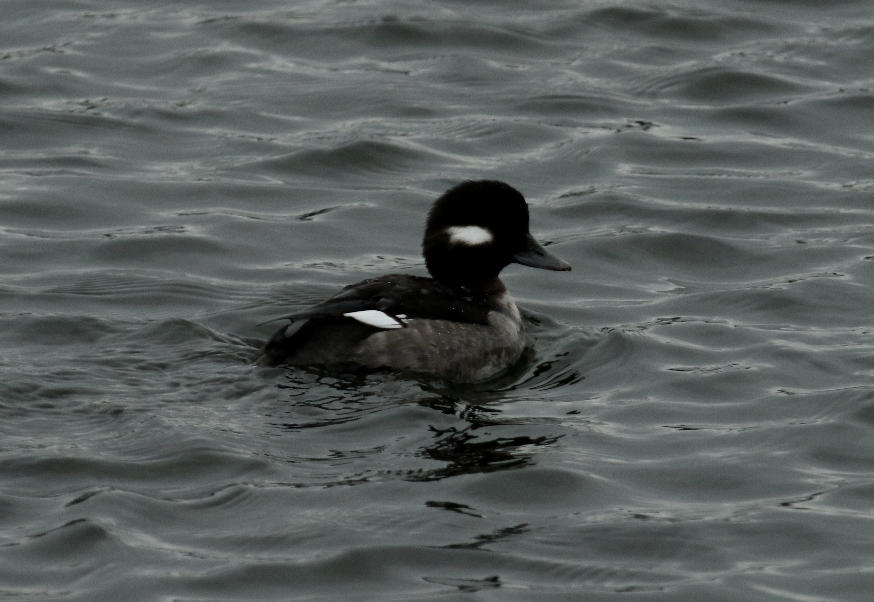Bufflehead (Bucephala albeola)

Buffleheads are small, diving ducks with a round head and a short, wide bill. Adult male buffleheads have distinctive black and white plumage, which includes a black head with a large, white patch wrapping around the back, a white body, and a black back. Up-close, the black head feathers of male buffleheads have an iridescent green, blue, and purple sheen. Female and juvenile buffleheads have grey-brown plumage with a distinctive white cheek patch.

Buffleheads surface dive for aquatic invertebrates, mollusks, and crustaceans, as well as some plant matter in the fall and winter. They typically swallow their food while underwater, and usually stay underwater for around 12-25 seconds. Buffleheads are the smallest diving duck in North America. Therefore, buffleheads almost exclusively use small cavity holes for nesting that are made by northern flickers. This is unlike most other cavity-nesting ducks who use larger tree cavities made by bigger species, such as pileated woodpeckers.

Buffleheads breed throughout the province (excluding coastal areas) and nest primarily on lakes and occasionally rivers. Since buffleheads rely on northern flicker cavities, their breeding range is limited by the distribution of northern flickers. However, northern flicker cavities are typically more common than cavities made by larger species, so this habitat requirement is not usually a limiting factor.
For more information, visit the BC Breeding Bird Atlas and All About Birds by the Cornell Lab.


